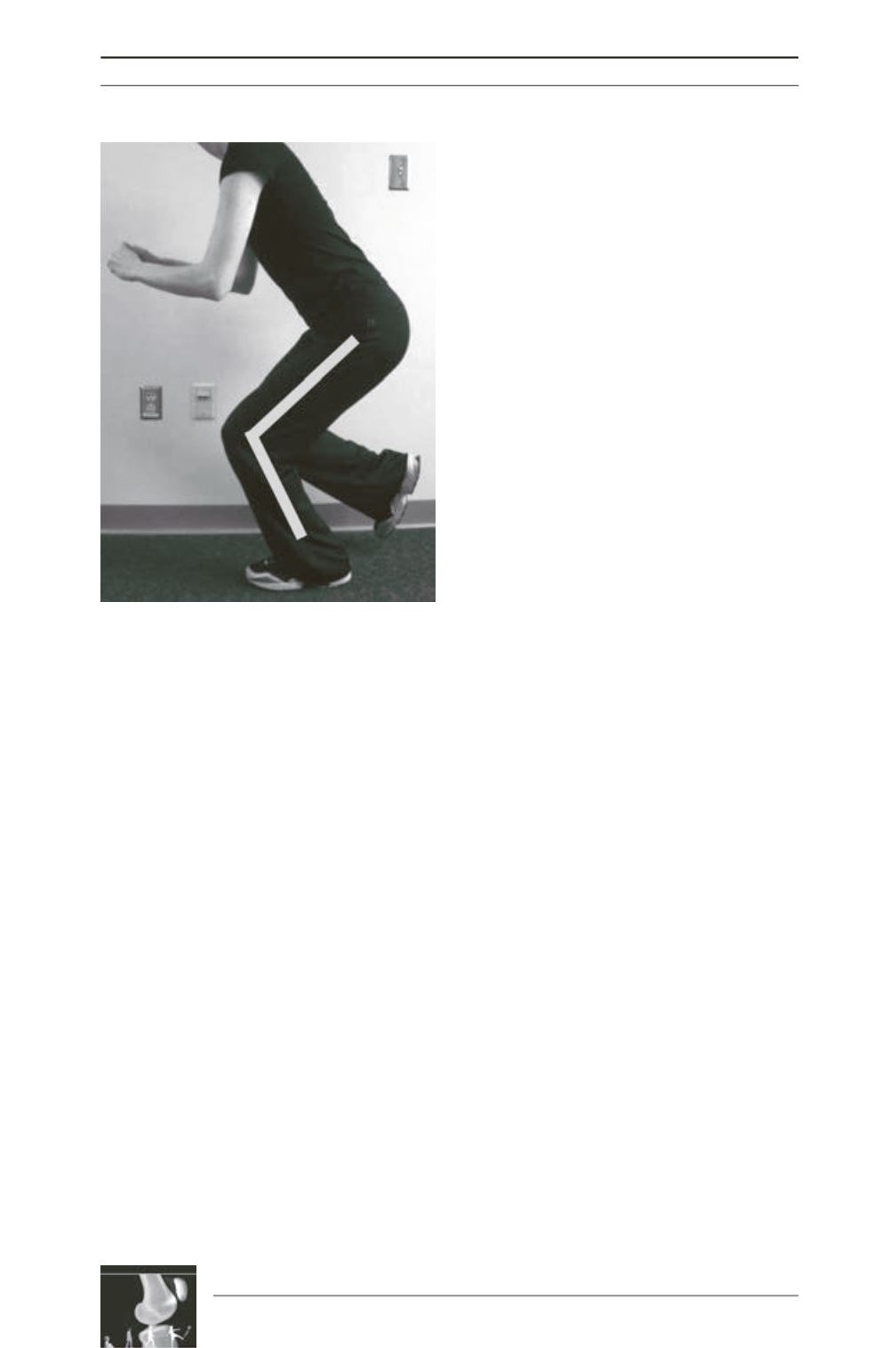

E.A. Arendt
372
by hip and core musculature): Core/trunk
stability is harder to test, as it is not limited to
an individual muscle group, and measurement
of muscle strength becomes more challenging
the more one progresses proximally on the
limb. Tests that can be performed in clinic
include timed holds of plank poses in positions
of progressively greater challenge (fig. 3).
Lower extremity physical performance tests
that have found utility in our clinical practice
for patients with PF problems are itemized
below (Table 1). The traditional hop tests,
employed with many lower extremity patients
who intend to return to cutting and pivoting
sports, require a higher level of functional
activity, and may not always be appropriate
with the PF population. Many PF pain patients
have experienced physical limitations from a
young age due to their joint dysfunction. To
this end, simpler, lower impact functional test
activities may prove more appropriate
measures.
Many lower level physical performance test
activities have not been validated in the
literature, but still find utility in the clinical
setting. Our testing activities commence with
basic anthropometric measures at the limb
including range of motion, joint line
circumference (effusion) and proximal thigh
circumference (return of thigh muscle girth).
We then proceed with progressively more
challenging activities, ranging from mat-based
core stability poses to static and dynamic CKC
balance testing to dynamic and propulsive
lower extremity strength, endurance and power
activities. Limb to limb differences, when
appropriate, are recorded and reported through
a LSI %.We also utilize qualitative observations
on body form and movement pattern. Though
these are difficult to quantify, we have found
utility in “grading” the form of the body
movement pattern and as way to convert a
qualitative observation into a quantitative
number (eg.) excellent form: grade 3, some
body form collapse: grade 2, poor form: grade
1, cannot perform test: grade 0. Additionally
we ask the patient to report a perceived exertion
level with all of the CORE endurance tests.
Conclusion
Though insights on the suspected causative
factors in patellofemoral dysfunction continue
to be developed, the day to day care of an
individual patient mandates customization of
physical therapy regiment coupled with a
trained physical therapist for maximumsuccess.
Training CORE muscles and optimizing body
movement patterns has great utility in a clinical
practice to reduce anterior knee pain and
improve body function.
Fig. 4 : Strength test: Single limb maximum depth
squat: maximum knee flexion angle reached at
depth of squat is measured and compared to the
opposite side.











